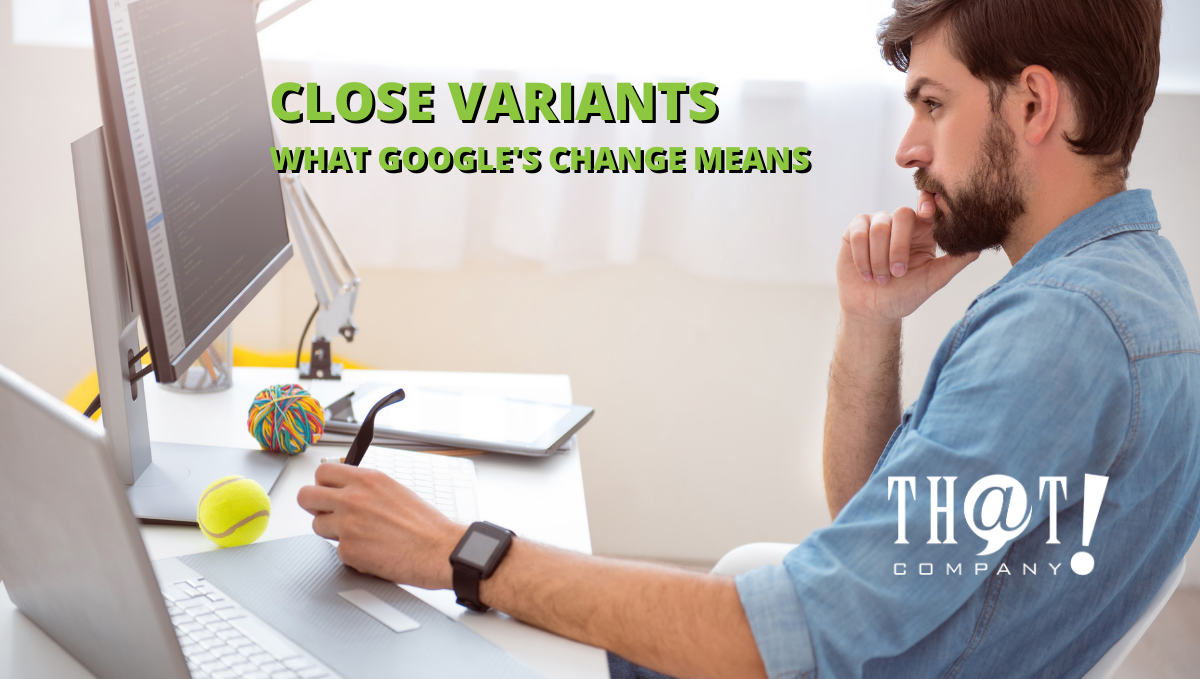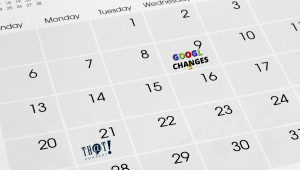
Welcome back! In Part 1 of this article, we introduced you to the basic issues that we deal with today since Google Ads has started using close variants when we are targeting different match type keywords within Google Ads. We continued by first covering “why” this is an issue, to begin with taking into consideration any specific individuals’ actual “user intent”.
We finished things up by completing a comprehensive review of “what” user intent is and identifying the four different types of user intent including Informational, Navigational, Transactional, and lastly Commercial Investigation. If you have found your way to this article first, you will want to go back and review Part 1 first if you are not familiar with the previous items I’ve just mentioned.
 So, we ended the last article after explaining the many different faces of user intent. However, that may have left you asking yourself “How do I use this to benefit myself within Google Ads, and specifically with Exact Match keywords?”. To answer that question, that is just where we will be starting today.
So, we ended the last article after explaining the many different faces of user intent. However, that may have left you asking yourself “How do I use this to benefit myself within Google Ads, and specifically with Exact Match keywords?”. To answer that question, that is just where we will be starting today.
Google’s use of close variants isn’t just limiting its issues with Exact Match terms. It’s also causing problems with Phrase Match and the Broad Match Modify as well. But how can Google’s use of close variants for Exact Match cause issues with other match types too? I’ll tell you. Put simply, it results in your account having duplicate search queries.
That said, there can obviously only be one winner within any given search auction, and according to Google, they will always choose whichever resulting keyword has the lowest cost per click. But what if that Ad has the wrong message for what that users’ search intent was specifically? The result is an irrelevant ad serving to an engaged person.
Our PPC management team groups our keywords in specific Campaigns and Ad Groups, in a specific order, with specific negatives, and other exclusion filters to guide particular search queries to relevant ads that answer, or speak to, the individual user’s specific “intent”. This is why a user’s intent is especially important when managing your Google Ads Account.
So, is it all bad? No. It’s not all bad. If you haven’t made any changes to your Google Ads account considering close variants it will most likely result in additional impressions. But that alone can have a negative impact on your account resulting in increased CTR (Click Through Rate) and ultimately higher CPCs (Cost Per Clicks).
It all depends on what industry you are working in to better determine whether these results can be identified as beneficial or not. These industries as really limited to both the Travel industries and the eCommerce industry as they will often continue to do well regardless of user intent so long as they have the product, or offer the service, that the individual user is searching for information about.
[bctt tweet=”If you haven’t made any changes to your Google Ads account considering close variants it will most likely result in additional impressions. But that alone can have a negative impact on your account resulting in increased CTR” username=”ThatCompanycom”]The Bad News
 The bad news is that Google thinks its machine learning is intuitive enough to identify a user’s intent without fail. That just isn’t the case. I’ve personally uncovered several different examples within a wide range of relevance. In one example I have a client that sells EDI (Electronic Data Interchange) Software.
The bad news is that Google thinks its machine learning is intuitive enough to identify a user’s intent without fail. That just isn’t the case. I’ve personally uncovered several different examples within a wide range of relevance. In one example I have a client that sells EDI (Electronic Data Interchange) Software.
We use several different Campaigns that target different stages of their sales cycle. We have Campaigns that target specific keywords surrounding EDI Software for several different Business Systems for people that are further down the sales cycle, and others that target broad “Exact Match” terms targeting people that are just starting out. In this example, we are targeting the Exact Match term [EDI].
Suddenly, when Google introduces close variants, we started seeing a spike in traffic and cost. After further investigation, we found that we were attracting traffic for the Exact Match term [ED] (a medical condition. Go ahead and laugh… I did!). This was far off base, and we ended up having to add [ED] as a negative keyword for this particular Campaign as it directly targeted this Exact Match keyword. On the other end of the spectrum, you can have something as simple as the term “Trademark Symbol” which can light up an ad for the Phrase Match term “Trademark Logo”.
What’s the difference? The intent is the difference. Someone searching for a “Trademark Symbol” would be looking for the actual symbol for Trademark (™), whereas someone searching for “Trademark Logo” would most likely be searching for information on trademarking their company logo. There is a gargantuan difference between the intent of the two.
How to Catch It, And What To Do When You Do
The proactive approach to catching these close variants is to regularly review your Search Query Reports in Google Ads. You can also see this same information within Google Analytics when looking at your paid search terms and adding a secondary dimension of your user’s “Search Query”.
 To take it to another level, you should also take a look at your Search Term Report in Google Ads for a period of time before Google implemented these changes, and compare that report to an equal period that occurred after the changes were made. Take note of the differences that occurred before Google implemented close variants, in comparison with the terms that are now appearing after Google implemented close variants.
To take it to another level, you should also take a look at your Search Term Report in Google Ads for a period of time before Google implemented these changes, and compare that report to an equal period that occurred after the changes were made. Take note of the differences that occurred before Google implemented close variants, in comparison with the terms that are now appearing after Google implemented close variants.
If you see something that is of relevance to you and your company, then consider using or implementing it in one of your Campaigns and Ad Groups. That said, make sure that it is relevant to the other keywords that are in that Campaign and Ad Group, as well as, and especially, the Ad(s) that are being served for that Ad Group. If they don’t match up and share relevance, then this whole process is for nothing as you are gaining nothing by doing it.
It’s important to remember that, and as I always say, “relevance is key” to a top-performing Google Ads Account. Without relevance, all you have is a bunch of irrelevant keywords guiding potential visitors to irrelevant pages from irrelevant ads. Not a good recipe for account success.
Moving forward, if you see something that doesn’t make any sense for you and your company you need to take those terms and start building out Negative Keyword Lists that you can use for that specific Campaign as well as others that you feel may benefit from the use of those same Negative Keywords. This will help increase the quality of your leads, by ensuring that these visitors make it to the correct landing page that has the answers, or the information, that they were looking for all along.
In Conclusion
Those managing PPC campaigns may see that they’ll want to restructure their Google Ads account. They may need to add/remove Campaigns taking into consideration the relevancy of their keywords and the search queries that they’ve seen in their Search Query Reports. In Ad Groups, they may see that their Ad Copy and/or the content on their landing page(s) are relevant, and therefore that might require a restructure of their Ad Groups. If their ad content and landing page(s) do match, then they still may find value in breaking their Ad Groups into multiple Match Types to further filter their terms into the proper Ads, by adding Ad Group Level Negatives instead of Campaign Level negative keywords. Happy Hunting!






























